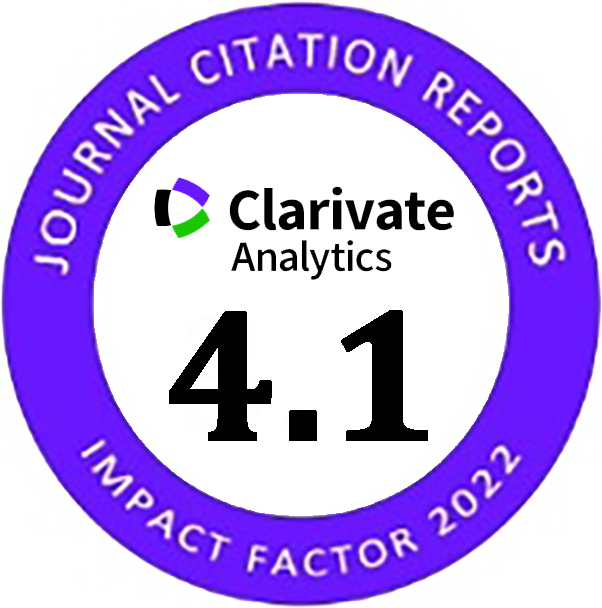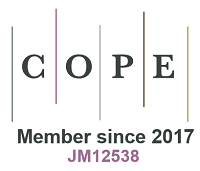Short-, Medium-, and Long-Term Prediction of Carbon Dioxide Emissions using Wavelet-Enhanced Extreme Learning Machine
Abstract
Doi: 10.28991/CEJ-2023-09-04-04
Full Text: PDF
Keywords
References
Qiao, W., Lu, H., Zhou, G., Azimi, M., Yang, Q., & Tian, W. (2020). A hybrid algorithm for carbon dioxide emissions forecasting based on improved lion swarm optimizer. Journal of Cleaner Production, 244, 118612. doi:10.1016/j.jclepro.2019.118612.
Acheampong, A. O., & Boateng, E. B. (2019). Modelling carbon emission intensity: Application of artificial neural network. Journal of Cleaner Production, 225, 833–856. doi:10.1016/j.jclepro.2019.03.352.
Li, F., Zhang, J., Oko, E., & Wang, M. (2017). Modelling of a post-combustion CO2 capture process using extreme learning machine. International Journal of Coal Science and Technology, 4(1), 33–40. doi:10.1007/s40789-017-0158-1.
Alias, N. I., Jayakumar, J. K., & Zain, S. M. (2018). Characterization of waste cooking oil for biodiesel production. Jurnal Kejuruteraan, 1(2), 79-83. doi:10.17576/jkukm-2018-si1(2)-10.
Ridzuan, N. H. A. M., Marwan, N. F., Khalid, N., Ali, M. H., & Tseng, M. L. (2020). Effects of agriculture, renewable energy, and economic growth on carbon dioxide emissions: Evidence of the environmental Kuznets curve. Resources, Conservation and Recycling, 160, 104879. doi:10.1016/j.resconrec.2020.104879.
Marjanović, V., Milovančević, M., & Mladenović, I. (2016). Prediction of GDP growth rate based on carbon dioxide (CO2) emissions. Journal of CO2 Utilization, 16, 212–217. doi:10.1016/j.jcou.2016.07.009.
Yatim, P., Mamat, M. N., Mohamad-Zailani, S. H., & Ramlee, S. (2016). Energy policy shifts towards sustainable energy future for Malaysia. Clean Technologies and Environmental Policy, 18(6), 1685–1695. doi:10.1007/s10098-016-1151-x.
Acheampong, A. O. (2018). Economic growth, CO2 emissions and energy consumption: What causes what and where? Energy Economics, 74, 677–692. doi:10.1016/j.eneco.2018.07.022.
Yaacob, N. F. F., Yazid, M. R. M., Maulud, K. N. A., & Basri, N. E. A. (2020). A review of the measurement method, analysis and implementation policy of carbon dioxide emission from transportation. Sustainability (Switzerland), 12(14), 5873. doi:10.3390/su12145873.
An, Q., Wen, Y., Xiong, B., Yang, M., & Chen, X. (2017). Allocation of carbon dioxide emission permits with the minimum cost for Chinese provinces in big data environment. Journal of Cleaner Production, 142, 886–893. doi:10.1016/j.jclepro.2016.07.072.
Foster, V., & Bedrosyan, D. (2014). Understanding CO2 emissions from the global energy sector. Live Wire, 2014/5, World Bank, Washington, United States.
IEA. (2020). Global CO2 emissions in 2019. International Energy Agency (IEA), Paris, France. Available online: https://www.iea.org/articles/global-co2-emissions-in-2019 (accessed on March 2023).
Gielen, D., Boshell, F., Saygin, D., Bazilian, M. D., Wagner, N., & Gorini, R. (2019). The role of renewable energy in the global energy transformation. Energy Strategy Reviews, 24, 38–50. doi:10.1016/j.esr.2019.01.006.
Lu, H., Huang, K., Azimi, M., & Guo, L. (2019). Blockchain technology in the oil and gas industry: A review of applications, opportunities, challenges, and risks. IEEE Access, 7, 41426–41444. doi:10.1109/ACCESS.2019.2907695.
Reijnders, L., & Huijbregts, M. A. J. (2008). Palm oil and the emission of carbon-based greenhouse gases. Journal of Cleaner Production, 16(4), 477–482. doi:10.1016/j.jclepro.2006.07.054.
Zhang, Y., & Fu, B. (2023). Impact of China's establishment of ecological civilization pilot zones on carbon dioxide emissions. Journal of Environmental Management, 325, 116652. doi:10.1016/j.jenvman.2022.116652.
Baareh, A. K. (2013). Solving the Carbon Dioxide Emission Estimation Problem: An Artificial Neural Network Model. Journal of Software Engineering and Applications, 06(07), 338–342. doi:10.4236/jsea.2013.67042.
Fang, D., Zhang, X., Yu, Q., Jin, T. C., & Tian, L. (2018). A novel method for carbon dioxide emission forecasting based on improved Gaussian processes regression. Journal of Cleaner Production, 173, 143–150. doi:10.1016/j.jclepro.2017.05.102.
Lin, B., & Ahmad, I. (2017). Analysis of energy related carbon dioxide emission and reduction potential in Pakistan. Journal of Cleaner Production, 143, 278–287. doi:10.1016/j.jclepro.2016.12.113.
Oh, I., Wehrmeyer, W., & Mulugetta, Y. (2010). Decomposition analysis and mitigation strategies of CO2 emissions from energy consumption in South Korea. Energy Policy, 38(1), 364–377. doi:10.1016/j.enpol.2009.09.027.
Mardani, A., Liao, H., Nilashi, M., Alrasheedi, M., & Cavallaro, F. (2020). A multi-stage method to predict carbon dioxide emissions using dimensionality reduction, clustering, and machine learning techniques. Journal of Cleaner Production, 275, 122942. doi:10.1016/j.jclepro.2020.122942.
Saleh, C., Dzakiyullah, N. R., & Nugroho, J. B. (2016). Carbon dioxide emission prediction using support vector machine. IOP Conference Series: Materials Science and Engineering, 114, 012148. doi:10.1088/1757-899x/114/1/012148.
Yaseen, Z. M., Sulaiman, S. O., Deo, R. C., & Chau, K. W. (2019). An enhanced extreme learning machine model for river flow forecasting: State-of-the-art, practical applications in water resource engineering area and future research direction. Journal of Hydrology, 569, 387–408. doi:10.1016/j.jhydrol.2018.11.069.
Shao, Z., Zhai, Q., Wu, J., & Guan, X. (2021). Data Based Linear Power Flow Model: Investigation of a Least-Squares Based Approximation. IEEE Transactions on Power Systems, 36(5), 4246–4258. doi:10.1109/TPWRS.2021.3062359.
Global Monitoring Laboratory. (2023). U.S. Department of Commerce, National Oceanic & Atmospheric Administration, NOAA Research, Boulder, United States. Available online: https://gml.noaa.gov/obop/mlo/aboutus/siteInformation/ mlosite.html (accessed on March 2023).
G.M. Laboratory (2020). Earth System Research Laboratories. U.S. Department of Commerce, National Oceanic & Atmospheric Administration, NOAA Research, Boulder, United States. Available online: https://gml.noaa.gov/ (accessed on March 2023).
Huang, G.-B., Zhu, Q.-Y., & Siew, C.-K. (2006). Extreme learning machine: Theory and applications. Neurocomputing, 70(1–3), 489–501. doi:10.1016/j.neucom.2005.12.126.
Wang, W., Peng, W., Xu, J., Zhang, R., & Zhao, Y. (2018). Driving factor analysis and forecasting of CO2 emissions from power output in China using scenario analysis and CSCWOA-ELM method. Energies, 11(10), 2709. doi:10.3390/en11102709.
Masmoudi, S., Elghazel, H., Taieb, D., Yazar, O., & Kallel, A. (2020). A machine-learning framework for predicting multiple air pollutants’ concentrations via multi-target regression and feature selection. Science of the Total Environment, 715, 136991. doi:10.1016/j.scitotenv.2020.136991.
Wei, S., Yuwei, W., & Chongchong, Z. (2018). Forecasting CO2 emissions in Hebei, China, through moth-flame optimization based on the random forest and extreme learning machine. Environmental Science and Pollution Research, 25(29), 28985–28997. doi:10.1007/s11356-018-2738-z.
Hameed, M. M., Alomar, M. K., Khaleel, F., & Al-Ansari, N. (2021). An Extra Tree Regression Model for Discharge Coefficient Prediction: Novel, Practical Applications in the Hydraulic Sector and Future Research Directions. Mathematical Problems in Engineering, 2021, 7001710. doi:10.1155/2021/7001710.
Hameed, M. M., Alomar, M. K., Mohd Razali, S. F., Kareem Khalaf, M. A., Baniya, W. J., Sharafati, A., & Alsaadi, M. A. (2021). Application of Artificial Intelligence Models for Evapotranspiration Prediction along the Southern Coast of Turkey. Complexity, 2021, 8850243. doi:10.1155/2021/8850243.
Hameed, M. M., AlOmar, M. K., Baniya, W. J., & AlSaadi, M. A. (2022). Prediction of high-strength concrete: high-order response surface methodology modeling approach. Engineering with Computers, 38(2), 1655–1668. doi:10.1007/s00366-021-01284-z.
Hough, P. D., & Vavasis, S. A. (1997). Complete orthogonal decomposition for weighted least squares. SIAM Journal on Matrix Analysis and Applications, 18(2), 369–392. doi:10.1137/S089547989528079X.
Guo, W., Xu, T., & Lu, Z. (2016). An integrated chaotic time series prediction model based on efficient extreme learning machine and differential evolution. Neural Computing and Applications, 27(4), 883–898. doi:10.1007/s00521-015-1903-2.
Addison, P. S., Murray, K. B., & Watson, J. N. (2001). Wavelet Transform Analysis of Open Channel Wake Flows. Journal of Engineering Mechanics, 127(1), 58–70. doi:10.1061/(asce)0733-9399(2001)127:1(58).
Zhu, H., Hu, W., Jing, Y., Cao, Y., Bi, R., & Yang, W. (2018). Soil organic carbon prediction based on scale-specific relationships with environmental factors by discrete wavelet transform. Geoderma, 330, 9–18. doi:10.1016/j.geoderma.2018.05.029.
Nourani, V., Hosseini Baghanam, A., Adamowski, J., & Kisi, O. (2014). Applications of hybrid wavelet-Artificial Intelligence models in hydrology: A review. Journal of Hydrology, 514, 358–377. doi:10.1016/j.jhydrol.2014.03.057.
Sharghi, E., Nourani, V., Najafi, H., & Molajou, A. (2018). Emotional ANN (EANN) and Wavelet-ANN (WANN) Approaches for Markovian and Seasonal Based Modeling of Rainfall-Runoff Process. Water Resources Management, 32(10), 3441–3456. doi:10.1007/s11269-018-2000-y.
Fosten, J. (2019). CO2 emissions and economic activity: A short-to-medium run perspective. Energy Economics, 83, 415–429. doi:10.1016/j.eneco.2019.07.015.
Pla, C., Cuezva, S., Garcia-Anton, E., Fernandez-Cortes, A., Cañaveras, J. C., Sanchez-Moral, S., & Benavente, D. (2016). Changes in the CO2 dynamics in near-surface cavities under a future warming scenario: Factors and evidence from the field and experimental findings. Science of the Total Environment, 565, 1151–1164. doi:10.1016/j.scitotenv.2016.05.160.
Ma, D., Tan, W., Zhang, Z., Wang, X., Xia, F., & Hu, J. (2018). Recognition of leak CO2 with wavelet analysis based on correlation monitoring between CO2 and O2 in atmosphere. Process Safety and Environmental Protection, 114, 64–78. doi:10.1016/j.psep.2017.12.009.
Oh, Y. Y., Yun, S. T., Yu, S., Kim, H. J., & Jun, S. C. (2018). Characterization of Environmental Drivers Controlling the Baseline of Soil Surface CO2 Flux using Wavelet-based Multiresolution State-Space Model and Wavelet Denoising. Energy Procedia, 154, 157–162. doi:10.1016/j.egypro.2018.11.026.
Ebrahimi, H., & Rajaee, T. (2017). Simulation of groundwater level variations using wavelet combined with neural network, linear regression and support vector machine. Global and Planetary Change, 148, 181–191. doi:10.1016/j.gloplacha.2016.11.014.
Nury, A. H., Hasan, K., & Alam, Md. J. B. (2017). Comparative study of wavelet-ARIMA and wavelet-ANN models for temperature time series data in northeastern Bangladesh. Journal of King Saud University - Science, 29(1), 47–61. doi:10.1016/j.jksus.2015.12.002.
AlOmar, M. K., Hameed, M. M., & AlSaadi, M. A. (2020). Multi hours ahead prediction of surface ozone gas concentration: Robust artificial intelligence approach. Atmospheric Pollution Research, 11(9), 1572–1587. doi:10.1016/j.apr.2020.06.024.
Yan, H., Mou, Y., Xu, X., Du, J., Wang, R., & Liu, P. (2018). A comparative assessment of predicting CH4 adsorption on different activated carbons using generalized regression neural network (GRNN), and adaptive network-based fuzzy inference system (ANFIS). Energy Sources, Part A: Recovery, Utilization, and Environmental Effects, 41(16), 1983–1992. doi:10.1080/15567036.2018.1548527.
Metia, S., Ha, Q. P., Duc, H. N., & Scorgie, Y. (2020). Urban air pollution estimation using unscented Kalman filtered inverse modeling with scaled monitoring data. Sustainable Cities and Society, 54, 101970. doi:10.1016/j.scs.2019.101970.
Hameed, M., Sharqi, S. S., Yaseen, Z. M., Afan, H. A., Hussain, A., & Elshafie, A. (2017). Application of artificial intelligence (AI) techniques in water quality index prediction: a case study in tropical region, Malaysia. Neural Computing and Applications, 28(1), 893–905. doi:10.1007/s00521-016-2404-7.
Ali, A., Abdulrahman, A., Garg, S., Maqsood, K., & Murshid, G. (2019). Application of artificial neural networks (ANN) for vapor-liquid-solid equilibrium prediction for CH4-CO2 binary mixture. Greenhouse Gases: Science and Technology, 9(1), 67–78. doi:10.1002/ghg.1833.
Alomar, M. K., Hameed, M. M., Al-Ansari, N., & Alsaadi, M. A. (2020). Data-Driven Model for the Prediction of Total Dissolved Gas: Robust Artificial Intelligence Approach. Advances in Civil Engineering, 2020, 6618842. doi:10.1155/2020/6618842.
DOI: 10.28991/CEJ-2023-09-04-04
Refbacks
- There are currently no refbacks.
Copyright (c) 2023 Mohamed Khalid AlOmar, Mohammed Majeed Hameed, Nadhir Al-Ansari, Siti Fatin Mohd Razali, Mohammed Abdulhakim AlSaadi

This work is licensed under a Creative Commons Attribution 4.0 International License.






